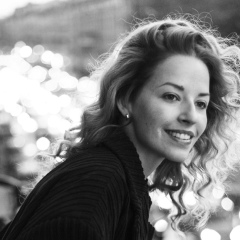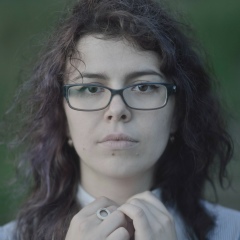Минутка советской истории. Недалеко от Павловска есть такое вот интересное здание бывшей финской лютеранской церкви Марии Магдалины, построенное в конце 19 века (а вообще, деревянная церковь на этом месте появилась еще до основания Петербурга). Церковь, которая относилась к приходу Венйоки, была рассчитана на 1100 человек, в ней был орган и фисгармония. К 1917 году количество прихожан составляло почти 13 тыс. человек, богослужения велись на финском языке.
В 1937 г. последнего пастора церкви Пекку Бракса обвинили в шпионаже и расстреляли на Левашовском полигоне, а церковь передали опытной станции Всесоюзного института растениеводства "Красный пахарь" для использования под клуб, вход в здание сделали с восточной стороны на месте алтаря.
В 1941 г. взорвали колокольню, которую, по мнению военных, противник мог использовать как наблюдательный пункт, в 50е разрушили боковые башни и надстроили еще один этаж, исказив облик здания, а в 1970е разрушили небольное лютеранское кладбище при церкви.
Ах да, В 2001 году КГИОП включил здание кирхи в список вновь выявленных объектов, представляющих историческую, научную, художественную или иную культурную ценность.
В 1937 г. последнего пастора церкви Пекку Бракса обвинили в шпионаже и расстреляли на Левашовском полигоне, а церковь передали опытной станции Всесоюзного института растениеводства "Красный пахарь" для использования под клуб, вход в здание сделали с восточной стороны на месте алтаря.
В 1941 г. взорвали колокольню, которую, по мнению военных, противник мог использовать как наблюдательный пункт, в 50е разрушили боковые башни и надстроили еще один этаж, исказив облик здания, а в 1970е разрушили небольное лютеранское кладбище при церкви.
Ах да, В 2001 году КГИОП включил здание кирхи в список вновь выявленных объектов, представляющих историческую, научную, художественную или иную культурную ценность.
A moment of Soviet history. Not far from Pavlovsk there is such an interesting building of the former Finnish Lutheran Church of Mary Magdalene, built at the end of the 19th century (in general, a wooden church in this place appeared even before the foundation of St. Petersburg). The church, which belonged to the arrival of Wenjoki, was designed for 1100 people, it had an organ and harmonium. By 1917, the number of parishioners was almost 13 thousand people, services were conducted in Finnish.
In 1937, the last pastor of the church, Pekka Braks, was accused of espionage and shot at the Levashovsky training ground, and the church was transferred to the experimental station of the All-Union Institute of Plant Production "Red Plowman" for use as a club, the entrance to the building was made on the east side at the altar site.
In 1941, the bell tower was blown up, which, according to the military, the enemy could use as an observation post, in the 50s they destroyed the side towers and built up another floor, distorting the appearance of the building, and in the 1970s they destroyed the sick Lutheran cemetery at the church.
Oh yes, in 2001, the KGIOP included the church building in the list of newly discovered objects of historical, scientific, artistic or other cultural value.
In 1937, the last pastor of the church, Pekka Braks, was accused of espionage and shot at the Levashovsky training ground, and the church was transferred to the experimental station of the All-Union Institute of Plant Production "Red Plowman" for use as a club, the entrance to the building was made on the east side at the altar site.
In 1941, the bell tower was blown up, which, according to the military, the enemy could use as an observation post, in the 50s they destroyed the side towers and built up another floor, distorting the appearance of the building, and in the 1970s they destroyed the sick Lutheran cemetery at the church.
Oh yes, in 2001, the KGIOP included the church building in the list of newly discovered objects of historical, scientific, artistic or other cultural value.






У записи 1 лайков,
0 репостов.
0 репостов.
Эту запись оставил(а) на своей стене Павел Лякс






















